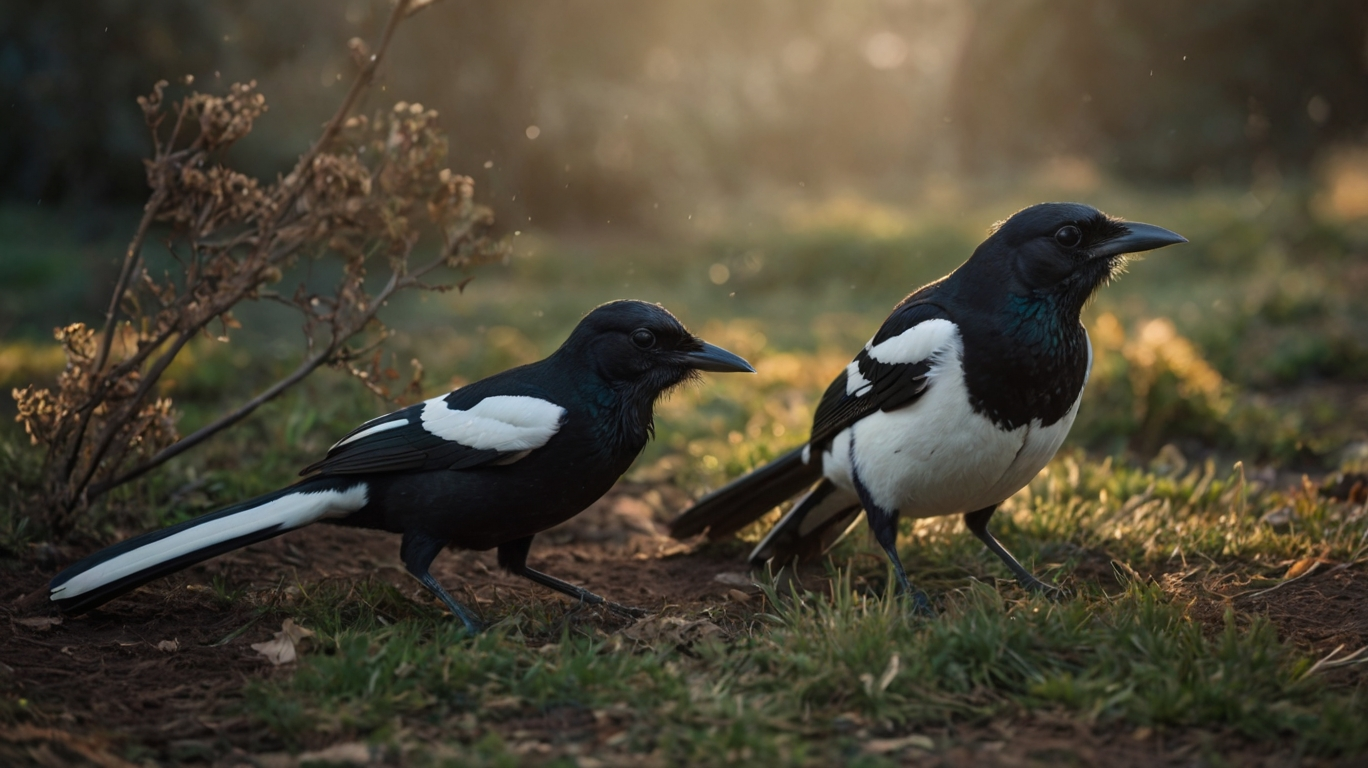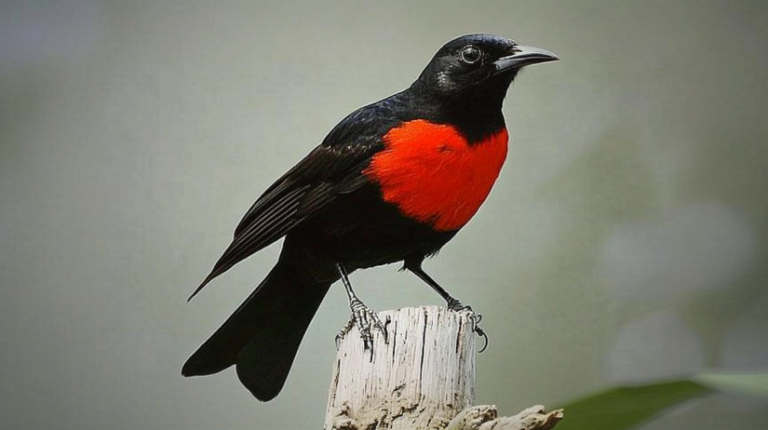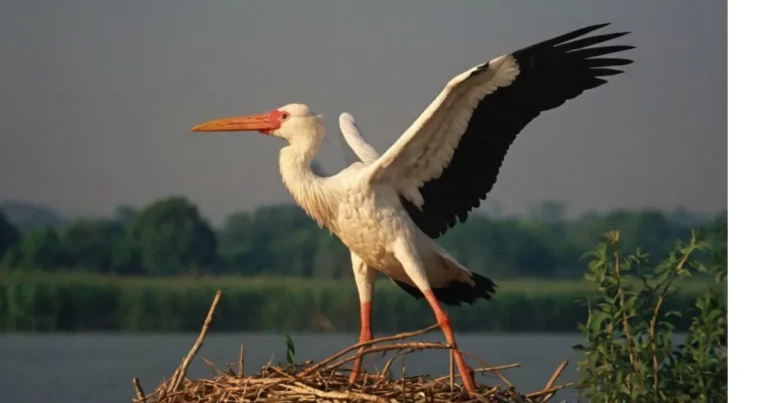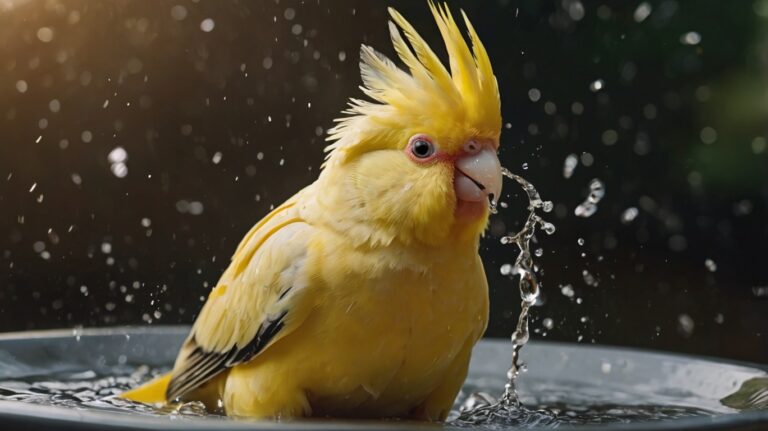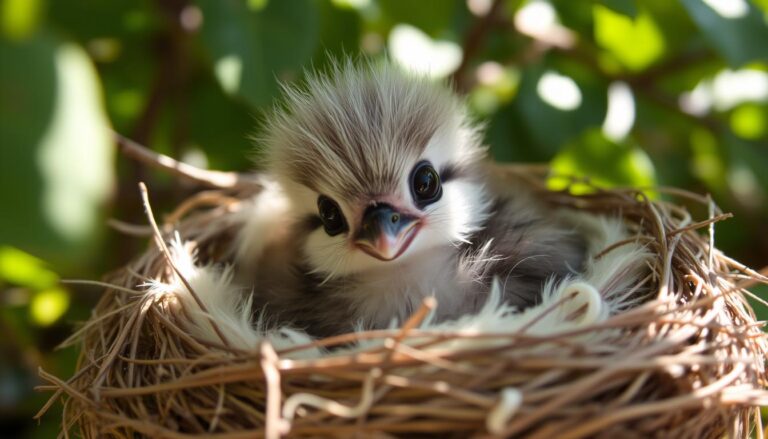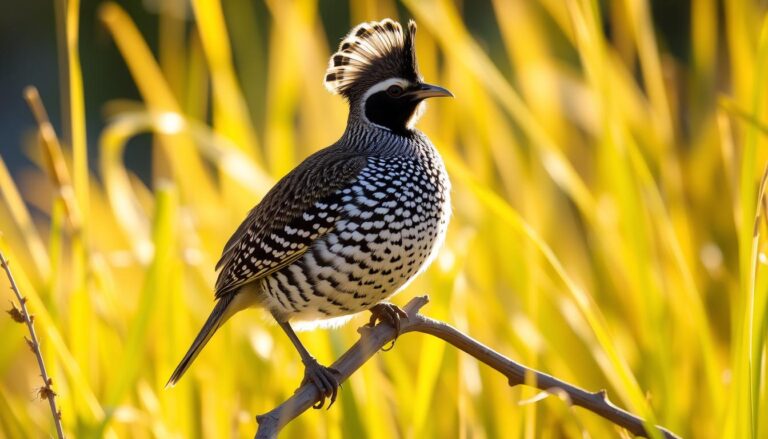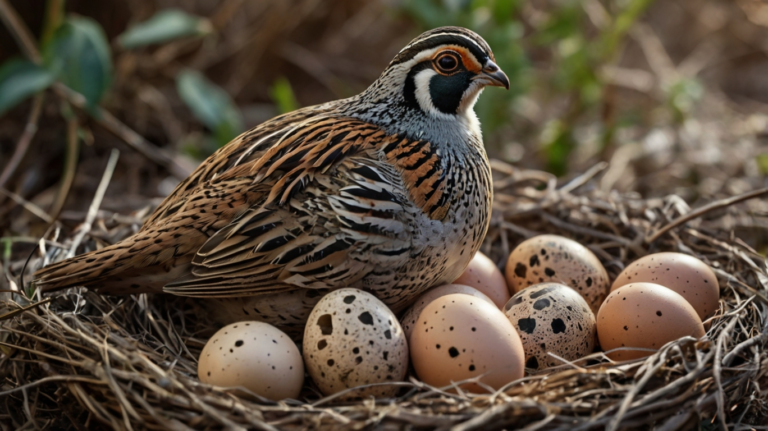Black and White Birds: 15 Fantastic & Essential Facts
Introduction
Picture yourself strolling through a quiet park, binoculars in hand, scanning the treetops for a glimpse of something extraordinary. Suddenly, you spot a flutter of monochrome plumage—a flash of crisp white feathers against a sleek black backdrop. If you’ve ever paused to admire black and white birds and found yourself awestruck by their classic, almost dapper appearance, you’re not alone. For many bird enthusiasts, these two-tone wonders evoke a sense of timeless style, blending a palette so minimal yet so striking.
In this playful yet informative guide, we’ll delve into the enthralling world of black and white birds. We’ll explore their biology, behaviors, and habitats, drawing on reputable sources to ensure every fact is reliable and informative. Along the way, you’ll gather tips on spotting these delightful creatures, learn how to attract them to your own backyard (if your local ecosystem allows), and glean practical advice to appreciate them responsibly. By the end, you’ll have a deeper understanding of the black and white birds you see in your neighborhood, on nature walks, or even while traveling around the country. Let’s get started!
Why the Allure of Black and White Birds?
The visual impact of black and white birds often comes down to contrast. That stark interplay of two opposite colors can highlight intricate patterns, whether it’s the bold striping on a woodpecker’s back or the delicate white spots on certain penguins’ chests. According to The Cornell Lab of Ornithology, contrast can play a vital role in mating displays, territorial defense, and species recognition.
Emotional Connection
Have you ever felt that rush of excitement when you spot black and white birds perched on a branch or gliding overhead? There’s something inherently satisfying about identifying patterns and shapes against a background of sky or foliage. Perhaps this fascination is tied to our own sense of aesthetics: we’re drawn to black-and-white art, photos, and minimalistic designs. In birds, this monochrome color scheme can feel both elegant and refreshing.
Cultural Significance
Throughout history, black and white birds have appeared in folklore, art, and literature. From ancient symbols of harmony and balance to modern references in pop culture, these avian beauties often represent duality. Whether seen as omens, messengers, or merely charming backyard visitors, black and white birds have secured their place in our collective imagination.
Common Characteristics and Adaptations
While it’s easy to group black and white birds together by color, it’s important to remember they come from diverse families and orders. Still, they share a few broad traits and adaptations worth exploring.
- Camouflage and Pattern Disruption
- Some black and white birds exploit their contrasting feathers to blend into varied backgrounds. The black and white stripes on a zebra, for instance, serve to confuse predators by disrupting outlines, and a similar principle applies to certain bird species that dwell in dappled light.
- Thermoregulation
- Dark feathers may help absorb more heat from sunlight, whereas white feathers can reflect it. In colder climates, black and white birds might position themselves for optimal heat absorption, offering a functional edge in harsher conditions.
- Social Signaling
- Bold contrasting plumage can act as a billboard during mating season. For many species, such as some woodpeckers, a striking black and white pattern is crucial for attracting mates and warding off competitors.
Popular Types of Black and White Birds
Below are some of the most commonly recognized black and white birds you might encounter. This is far from an exhaustive list, but it’s a great starting point if you’re eager to learn more about these visually stunning creatures.
Woodpeckers
Downy Woodpecker (Dryobates pubescens)
- Identifiable by the distinctive checkerboard pattern on the wings and a subtle white stripe down the back.
- Frequently seen visiting backyard feeders, especially suet feeders in colder months.
- Their short, sharp calls add a lively soundtrack to many North American woodlands.
Hairy Woodpecker (Dryobates villosus)
- Often mistaken for the Downy Woodpecker, but larger with a more robust bill.
- Black-and-white checkered pattern, featuring a white back and outer tail feathers with black spots.
- Feeds on insects, seeds, and nuts, chiseling into tree bark to find hidden morsels.
Magpies and Other Corvids
Black-billed Magpie (Pica hudsonia)
- Boasts glossy black feathers with iridescent blues and greens, offset by bold white wing patches and belly.
- Known for high intelligence, social behavior, and loud, chattering calls.
- Commonly seen in open fields and near rural habitats across much of the western United States.
Pied Crow (Corvus albus)
- Predominantly black body with a conspicuous white chest and neck, found primarily in Sub-Saharan Africa.
- Like many corvids, it’s extremely intelligent and adaptable.
- Though not as common in the USA, it’s an iconic example of black and white birds on a global scale.
Penguins
When you think of black and white birds, penguins might be the first that come to mind. These flightless wonders sport a classic tuxedo look that helps them camouflage in the water and on the ice.
Emperor Penguin (Aptenodytes forsteri)
- The largest of the penguin family, famous for its black back, white belly, and subtle yellow-orange ear patches.
- Renowned for surviving the brutal Antarctic winters by huddling in colonies.
- According to a study published by the National Science Foundation, these penguins endure temperatures as low as -76°F (-60°C).
Adélie Penguin (Pygoscelis adeliae)
- Smaller in size, with a sleek black head, white ring around the eye, and a clean white belly.
- Highly social, often forming large colonies on the Antarctic coast.
- Exhibits fascinating behaviors like nest-building using small stones and pebbles.
Seabirds and Shorebirds
Many seabirds also showcase a black and white plumage, aiding in camouflage against the sky from above and the light reflection off water from below.
Atlantic Puffin (Fratercula arctica)
- Recognized for its clown-like multicolored bill, though its body remains primarily black above and white below.
- Spends the majority of its time in the ocean, coming ashore for breeding.
- In North America, colonies nest along rocky cliffs in places like Maine and Canada.
Razorbill (Alca torda)
- Close relative of the puffin, with a black head, neck, and back contrasting a white belly.
- Noted for its thick, blunt bill marked by a pale line.
- Breeds in colonies along the northern Atlantic coastline.
Other Noteworthy Species
Pied Wagtail (Motacilla alba)
- Although more common in Europe and Asia, sometimes spotted as a rarity in Alaska.
- Known for its wagging tail behavior, dashing black cap, and bright white face.
- Feeds primarily on insects, flitting around open areas and shallow waters.
Banded Kingfisher (Lacedo pulchella) (Male)
- Found in Southeast Asia, the male displays a vibrant blue band paired with black-and-white barring on the wings.
- Known for a piercing, repetitive call that resonates through the rainforest canopy.
- Highlights the sheer global diversity of black and white birds.
Below is a quick-reference table to help you compare some black and white birds by region, habitat, and key characteristics.
| Bird Name | Region | Key Characteristics |
|---|---|---|
| Downy Woodpecker | North America | Small, spotted wings, short bill, white back stripe |
| Black-billed Magpie | Western North America | Glossy black with white belly, long tail, loud chatter |
| Emperor Penguin | Antarctica | Largest penguin, tuxedo pattern, endures extreme cold |
| Adélie Penguin | Antarctica | White ring around eye, smaller build, social breeder |
| Atlantic Puffin | North Atlantic | Black back, white belly, colorful bill, sea bird |
| Razorbill | North Atlantic | Black head & back, white belly, thick blunt bill |
| Pied Wagtail | Europe/Asia (rare in AK) | Black cap, white face, wagging tail habit |
| Banded Kingfisher (M) | Southeast Asia | Blue band, black-and-white barring on wings, piercing call |
How to Spot Black and White Birds in the Wild
If you’re on a mission to identify black and white birds, here are some practical tips:
- Time of Day Matters
- Dawn and dusk can offer the best opportunities for birdwatching. Many species are most active during these twilight hours.
- Bring the Right Gear
- A decent pair of binoculars can be a game-changer. Look for ones with at least 8x magnification to see black and white birds in finer detail.
- Use Field Guides or Apps
- Field guides such as the Audubon Bird Guide or apps like Merlin Bird ID can help you quickly pinpoint what species you’re observing.
- Learn Their Calls
- Audio cues are incredibly useful. Even if you don’t see black and white birds immediately, recognizing their calls can lead you in the right direction.
- Research Local Hotspots
- Check wildlife refuges, nature reserves, or local parks known for diverse birdlife. Your county or state’s wildlife agency website often lists prime birdwatching sites.
By combining these tactics, you’ll significantly increase your chances of encountering black and white birds. Remember that patience is key, as birdwatching can be as much about enjoying the peace of nature as it is about spotting specific species.
Attracting Black and White Birds to Your Backyard
Bringing black and white birds closer to home is possible if you provide the right amenities. Here are a few suggestions:
- Feeders and Food Choices
- Many woodpeckers and nuthatches enjoy suet and peanuts. Corvids like magpies may go for seeds, fruits, and even scraps.
- Install feeders at different heights to cater to varied species.
- Keep feeders clean to avoid spreading diseases.
- Shelter and Nesting
- Plant trees, shrubs, or install nest boxes that black and white birds might favor.
- Native plants provide natural shelter and support local insect populations, offering more food options.
- For example, some black and white birds, like chickadees (also black and white in parts of their plumage), love thickets and dense shrubs.
- Water Sources
- A birdbath or small water feature can be a magnet for thirsty birds.
- Flowing or dripping water often catches a bird’s attention more effectively than still water.
- Avoid Pesticides
- Black and white birds rely on insects for protein, especially during breeding season.
- Reducing or eliminating pesticide use ensures a robust insect population.
- Respect Wildlife
- Always observe birds from a respectful distance, especially during nesting.
- If you notice any signs of disturbance, it may be time to step back.
For more tips on ethical birdwatching and backyard bird care, [INTERNAL LINK 2] offers further details about creating bird-friendly habitats.
Behavioral Quirks of Black and White Birds
What makes black and white birds truly captivating isn’t just their plumage—it’s also their personalities and habits.
- Playful Interactions: Magpies, for instance, are known to collect shiny objects and engage in complex social rituals.
- Teamwork in Penguins: Emperor Penguins survive Antarctic winters by huddling together for warmth, rotating positions to ensure that no individual is perpetually exposed to the cold.
- Tap, Tap, Tap: Woodpeckers are the percussionists of the bird world, drumming on tree trunks to mark territory or attract mates.
If you’re interested in learning more about such unique behaviors, you might find [INTERNAL LINK 2] particularly insightful.
Conservation Concerns
Like many wildlife species, black and white birds face a variety of threats, including habitat loss, pollution, and climate change. Organizations such as the National Audubon Society (visit them here) have highlighted how shifts in temperature and weather patterns influence migration and breeding. Some penguin populations, for example, struggle with diminishing ice caps, while corvids in certain areas face habitat fragmentation.
Action Steps
- Support Conservation Groups: Whether through donations or volunteer work, your help can make a tangible difference.
- Citizen Science: Participating in bird counts and surveys provides valuable data for researchers.
- Local Policy Engagement: Advocating for green spaces in urban planning can sustain habitats for black and white birds.
If you’re curious about the best times to contribute or which counts to join, check [INTERNAL LINK 3]. Their resources outline how you can get involved in local birding initiatives and help support black and white birds in your region.
Real-Life Example of Human-Bird Connection
Picture an urban backyard in Seattle where a family sets up multiple feeders. Over time, they notice a pair of Downy Woodpeckers returning daily. The family documents the visits, noting that the black and white birds display a remarkable trust—eventually landing only a few feet away. They tailor their backyard habitat by planting native shrubs, turning their small patch of land into an oasis. Soon, other species join—chickadees, nuthatches, and even an occasional hawk. This anecdote highlights how even a limited space can become a thriving ecosystem if managed thoughtfully.
FAQs
What kind of bird is black with white feathers in North America?
Black and white birds in North America include the Downy Woodpecker and the Black-billed Magpie. Their contrasting feathers offer both camouflage and social signaling. Observing them can be a delightful experience.
Which black and white birds are easiest to spot in winter?
Many black and white birds, like certain woodpeckers, remain active through winter. Suet feeders often attract them to backyards. Their bold patterns make them easier to see against snowy landscapes.
What do black and white birds eat?
Black and white birds often eat insects, seeds, and fruits. Penguins feed on fish and krill, while corvids may enjoy nuts or scraps. The diet varies by species but typically aligns with local resources.
How can you attract black and white birds to your backyard?
Provide clean feeders with suet, seeds, or peanuts, plus fresh water sources. Plant native shrubs for shelter and insects. Black and white birds will visit if they find ample food and a safe environment.
Are black and white birds known for unique behaviors?
Many black and white birds exhibit fascinating traits, like woodpeckers drumming on trees. Penguins huddle for warmth, and magpies collect shiny objects. Such habits reveal their adaptability and intelligence.
Are black and white birds migratory?
Some black and white birds, such as certain shorebirds, migrate extensively. Others, like Downy Woodpeckers, stay put year-round. Migration patterns depend on climate, food availability, and species biology.
Conclusion
Black and white birds capture our imagination with their stark beauty and endlessly varied behaviors. From backyard woodpeckers to far-flung penguins, each species demonstrates remarkable adaptations and social intricacies. By learning to identify, appreciate, and protect these birds, you take an active role in preserving a vibrant and diverse natural world. So grab your binoculars, head to the nearest park or shoreline, and keep your eyes peeled for black and white birds. You might just discover a new favorite species or a deeper connection to the wildlife around you. Feel free to share your own sightings and stories in the comments below—your experiences can inspire others to join the adventure!
For further reading on bird conservation initiatives and research-backed strategies, visit the National Audubon Society.

